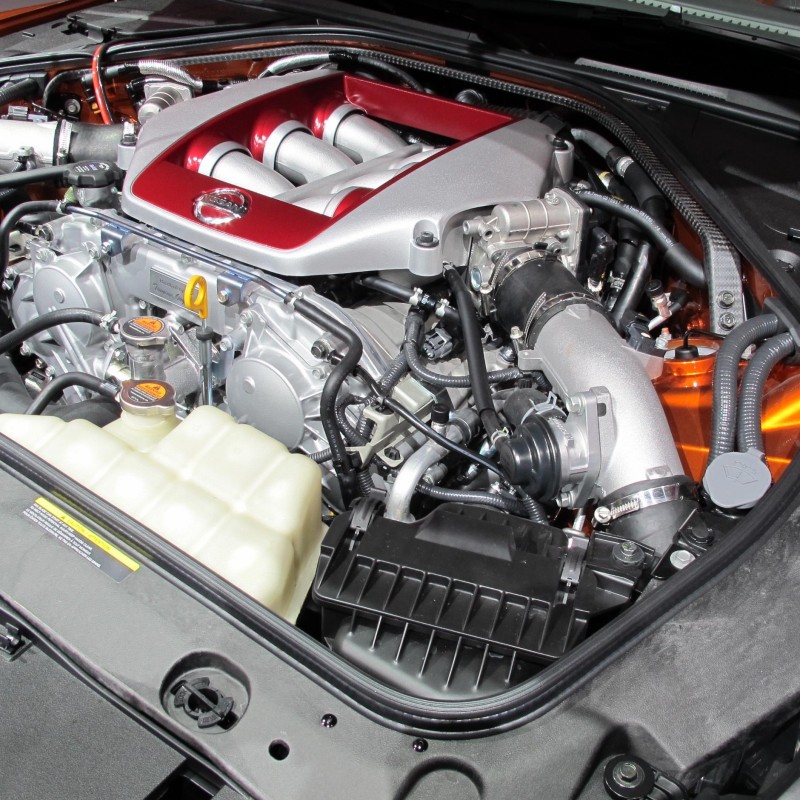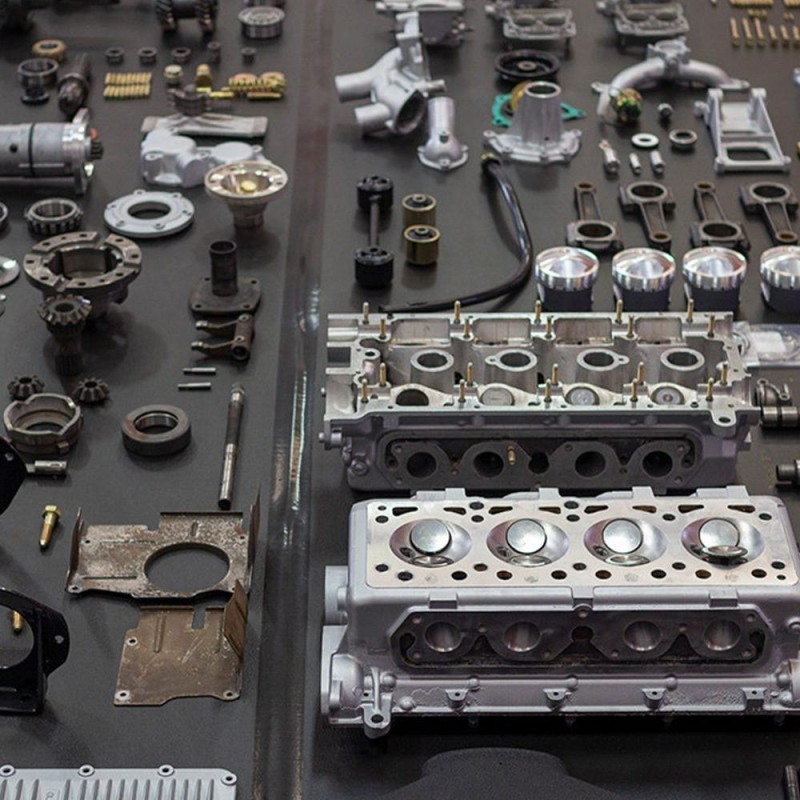The plastic intake manifold heat resistance is a critical factor in the performance and reliability of modern engines. Intake manifolds are essential components in delivering air to the engine’s combustion chambers, impacting both efficiency and power output. Traditionally, these manifolds were made from metal, which provided good heat resistance but came with significant downsides concerning weight and manufacturing costs. The transition to plastic intake manifolds finished with heat-resistant materials has revolutionized the automotive industry, offering several advantages.
Plastic manifolds are lighter, more versatile, and can be manufactured in complex shapes that improve airflow dynamics. However, understanding the implications of heat resistance in the materials used for these manifolds is crucial, as it affects their performance and durability. In this comprehensive article, we will explore the intricacies of plastic intake manifold heat resistance, examining the materials used, how heat impacts performance, the advantages of using plastic, and maintenance strategies to ensure longevity. By the end of this guide, you will have a nuanced understanding of this vital component in engine design.
The Role of the Intake Manifold in Engine Performance
To appreciate the significance of plastic intake manifold heat resistance, it’s vital to first understand what an intake manifold is and its role in the engine’s operation.
What is an Intake Manifold?
- Definition: The intake manifold is a series of passages and chambers that conveys air (and fuel in some cases) from the throttle body to the engine’s combustion chambers.
- Structure and Design: Intake manifolds can have various designs, depending on the engine type and its specific requirements. They can either be single plane or dual plane.
Importance of Airflow
- Air-Fuel Mixture: The intake manifold is responsible for delivering a precise air-fuel mixture to the engine’s cylinders. Proper airflow is critical for effective combustion.
- Engine Efficiency: A well-designed intake manifold enhances engine efficiency by ensuring that air flows smoothly and evenly into the combustion chambers, which aids combustion and power generation.
Impact on Performance
- Throttle Response: The design of the intake manifold directly affects throttle response. A smoother airflow allows for quicker acceleration and overall better performance.
- Power Output: Optimizing the intake manifold can lead to increased horsepower and torque, highlighting the importance of material selection and design.
Recognizing the critical role the intake manifold plays in overall engine performance helps clarify why factors such as heat resistance are integral to its durability and functionality.
The Science of Heat Resistance in Materials
Understanding heat resistance in the context of plastic intake manifolds involves examining how heat affects materials and performance. This section will detail the aspects of heat resistance as applied to intake manifolds.
Heat and Engine Operation
- Temperature Dynamics: Engines generate significant heat during operation. The intake manifold is situated in an environment where it may be exposed to high temperatures, especially from the engine block and exhaust components.
- Challenges: Excessive heat can degrade materials, leading to warping or failure. Thus, materials used in intake manifolds must exhibit reliable heat resistance.
Types of Heat-Resistant Materials
- Understanding Plastics: Various plastics, including polyamides, polyphenylene sulfide (PPS), and thermoplastics, have been developed for use in intake manifolds due to their weight and design advantages.
- Characteristics of High-Performance Plastics: These materials often exhibit superior heat resistance, chemical stability, and durability compared to traditional materials.
Thermal Conductivity
- Importance of Low Thermal Conductivity: Materials with low thermal conductivity can help reduce heat transfer from the engine to the intake system. This can maintain the air-fuel mixture at desired temperatures, enhancing performance.
- Role in Efficiency: Proper thermal management ensures optimal combustion, aiding in fuel efficiency and emissions control.
Effects of Heat Degradation
- Structural Failure: Prolonged exposure to high temperatures can lead to softening, deformation, or cracking of the intake manifold, negatively impacting performance.
- Air Leakage: Damage from heat can cause gaps in the manifold, leading to air leaks that disrupt the air-fuel mixture and decrease engine performance.
Understanding the science of heat resistance reinforces the need for careful material selection when manufacturing plastic intake manifolds to optimize performance and durability.
Advantages of Plastic Intake Manifolds
Plastic intake manifolds have gained traction over traditional metal models for several compelling reasons. The advantages of using plastic materials in production are substantial:
Lightweight Design
- Weight Reduction: Plastic intake manifolds are significantly lighter than their metal counterparts. This weight reduction improves overall vehicle performance and handling.
- Enhanced Fuel Efficiency: The lighter weight can contribute to enhanced fuel efficiency, making vehicles equipped with plastic manifolds more economical to run.
Design Flexibility
- Complex Shapes: Plastic materials allow for intricate designs that could be difficult or cost-prohibitive to achieve in metal. This design flexibility enables engineers to create optimized airflow paths within the manifold.
- Reduced Manufacturing Costs: The manufacturing process for plastic components often requires less labor and equipment, leading to reduced production costs.
Improved Thermal Management
- Lower Thermal Mass: Plastic manifolds can better manage temperature fluctuations, contributing to consistent engine performance and longevity.
- Insulation Qualities: Many plastic materials provide excellent thermal insulation, which helps maintain optimal temperatures of the air-fuel mixture.
Corrosion Resistance
- Durability: Unlike metals that can corrode over time, plastics resist rust and corrosion from exposure to chemicals and the elements, leading to longer service life.
- Minimal Maintenance: The resiliency of plastics reduces the need for frequent inspections and repairs concerning corrosion issues.

Cost-Effectiveness
- Affordable Option: Producing plastic intake manifolds can be more cost-effective for manufacturers and consumers alike, which often translates to lower parts prices.
- Longer Life Cycle: The durability and resistance to wear can result in fewer replacements over the vehicle’s lifetime, yielding a better return on investment.
The advantages of plastic intake manifolds serve to cement their position as a preferred choice in modern automotive engineering.
How to Maintain Plastic Intake Manifolds
While plastic intake manifolds are durable and resistant to many forms of wear and corrosion, they still require regular maintenance to ensure their longevity and optimal performance. Here are some best practices:
Regular Inspections
- Visual Checks: Routinely inspect the intake manifold for any signs of wear, cracks, or damage. Addressing concerns early can prevent further deterioration.
- Check for Leaks: Monitor for coolant or air leaks, which may indicate that the intake manifold is compromised. This could lead to issues with engine performance.
Cleaning the Intake System
- Perform Cleaning Services: Periodically clean the intake system to remove carbon buildup and debris that can affect performance.
- Use Safe Cleaning Solutions: When cleaning, use specialized cleaners designed for intake systems, avoiding harsh chemicals that could damage plastic components.
Fluid Monitoring
- Check Coolant Levels: Ensure that coolant levels are adequate to prevent overheating, which can affect the intake manifold’s function over time.
- Monitor Oil Conditions: Keep an eye on oil levels and change them as per the manufacturer’s recommendations to enhance overall engine performance.
Temperature Management
- Address Overheating Issues: Investigate any potential overheating concerns; prolonged engine heat can cause long-term damage to the intake manifold.
- Thermostat Functionality: Ensure the thermostat is functioning correctly, maintaining optimal engine temperatures.
Professional Maintenance
- Scheduled Inspections: Consider having your vehicle checked regularly by a qualified mechanic, especially as it ages. They can provide insights regarding the intake system’s condition.
- Addressing Rapid Wear: If you notice unusual wear or performance issues, consult a professional. Identifying problems early can save money on repairs and replacements.
By committing to ongoing maintenance, you can support the integrity and longevity of your plastic intake manifold, resulting in a well-running engine.
Signs That Indicate a Bad Intake Manifold
Being aware of indicators that your intake manifold could need repairs or replacement is crucial for vehicle maintenance. Here are the common signs to look for:
Engine Performance Issues
- Loss of Power: If you experience noticeable loss of power during acceleration, it could point to problems in the intake manifold affecting airflow to the engine.
- Poor Fuel Efficiency: A failing intake manifold may disrupt the air-fuel mixture, leading to reduced fuel efficiency. If you notice a drop in mileage, inspect the manifold.
Visible Damage
- Cracks and Warping: Conduct regular visual inspections. Look for any cracks, warping, or discoloration that could indicate the integrity of the manifold is compromised.
- Leak Signs: If you notice fluid leaking from the intake manifold or around the engine, it may necessitate immediate attention.
Unusual Sounds
- Rough Idling: If your vehicle is idling roughly or misfiring, it may be attributed to air leaks in the intake system, resulting from an impaired manifold.
- Popping Sounds: If you hear popping sounds in the intake manifold area, this could signal backfire issues caused by disruptions in normal airflow.
Engine Warning Lights
- Check Engine Light: A check engine light might illuminate, often indicating issues related to the intake system. Use a diagnostic tool to check for fault codes that may relate to the intake manifold.
- Consult a Mechanic: If the check engine light is on, it’s advisable to have the vehicle inspected by a professional mechanic who can offer guidance.
Recognizing these signs early can help prevent more severe problems down the road and ensure your engine continues to run smoothly.
Professional Repair vs. DIY Approaches
When it comes to addressing intake manifold issues, you may wonder whether to tackle repairs yourself or seek professional assistance. Here’s a breakdown of the considerations for each option:
DIY Repairs
- Basic Skill Level: If you have a good understanding of automotive systems, certain tasks—like sealing minor leaks or replacing gaskets—could be manageable.
- Cost Effectiveness: DIY repairs eliminate labor costs and can save money, provided you have the necessary skills, tools, and parts.
- Step-by-Step Guides: Numerous online resources and community forums provide detailed guides on performing various repairs, making the process easier for DIY enthusiasts.
Professional Repair
- Expertise Matters: Professional mechanics possess extensive knowledge and experience, allowing them to diagnose issues accurately and perform repairs efficiently.
- Access to Tools: Mechanics often have advanced diagnostic tools that can provide insights beyond simple visual inspections, saving you time and effort.
- Warranty and Reliability: Choosing professional services ensures that repairs are performed according to manufacturer specifications, maintaining the vehicle’s warranty and reliability.
Choosing between DIY repairs and professional assistance depends on your confidence in your skills and the complexity of the problem. Simple fixes may prove manageable, while serious issues often warrant the expertise of a qualified mechanic.
Conclusion
Understanding how to address power steering line issues, what the minimum tread depth for front tires is, and knowing when to replace essential components like the intake manifold is crucial for every vehicle owner. Recognizing the signs that signify a problem, learning how to break in jeans, and knowing where to buy baggy jeans are equally essential in enhancing your driving experience and ensuring the longevity of your vehicle.
This in-depth exploration of when to replace car tires, alongside insights into the best practices for maintaining power steering lines, helps create a rounded understanding of optimal vehicle care. Staying proactive on these aspects leads to better performance, enhanced safety, and a more enjoyable journey.
Ultimately, being knowledgeable about how to maintain various elements of your vehicle empowers you to make informed decisions, whether regarding maintenance or repairs. Embrace this knowledge to enhance your driving experience and support your vehicle’s longevity.
Tags: Automotive Safety, driver awareness., vehicle maintenance tips